Shhhh. Bali’s Day of Silence.
Original article was published on beBEE by Paul Walters

Paul v Walters is the best selling author of several novels. When he is not cocooned in sloth and procrastination in his house in Bali he also scribbles for several international travel and vox pop journals.
It’s 10.a.m. on a Thursday morning.
The only sound to be heard anywhere on the island of Bali will be the sound of birdsong. Today, no cars or motorcycles will ply the streets, no planes will fly overhead, the airport will be shuttered and dark. No boats will leave or enter the harbour, the shops and warungs will be closed and every street across the entire island will be deserted.
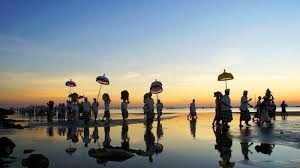
If by chance someone arrived and walked across Bali’s verdant fields and through its bustling capital he or she would wonder as to where the people were and perhaps think that they had stepped into a world where each and every soul had simply ….disappeared.
For today it is Nyepi. The Day of Silence.
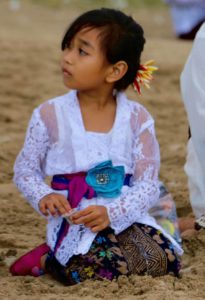
Nyepi is the Balinese “Day of Silence commemorated every Isakawarsa or the Saka new year according to the Balinese calendar. It is a Hindu celebration celebrated mainly in Bali where for twenty- four hours the citizens retreat to their houses and spend the day engaged in fasting and meditation.
As night falls, the island ‘goes dark’ with all lights doused so that the island virtually disappears. Commercial aircraft will alter their flight paths and give the ‘Island of The Gods’ a wide berth. All radio and television stations fall silent and the authorities even turn off the internet, effectively shutting some four million souls off from the outside world.
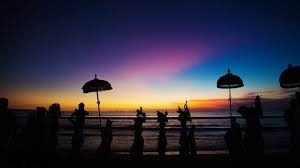
Bali is a place of a thousand Gods and spirits, some good and others bad. The reason for plunging the island into darkness is to confuse the evil spirits which hover in the sky and the belief is that they will become confused and not be able to find Bali in the dark!
The lead up to Nyepi great excitement mounts as giant Ogah Ogahs are created. These mammoth figurines, some standing as high as 40ft are depictions of devils and evil spirits and are fierce looking creatures. On the night before Nyepi, the Ogah Ogah’s are carried in parades through the various villages and the larger towns watched by thousands of cheering bystanders.
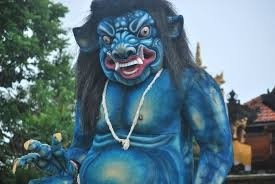
Many of these giant statues are then carried to the beaches and ceremoniously burnt. Once the parades and festivities conclude all residents and tourists alike scuttle back to their houses and hotels and will not be seen again for thirty – six hours as the period of silence begins.
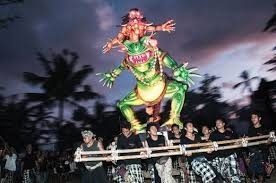
Bali has, and still does amaze me with its sense of tolerance as just sixty – five per cent of the population are Balinese Hindu with the remaining thirty – five per cent made up of Muslim and Christian faiths and yet all follow and adhere to the rituals of this spiritual day.
The day following Nyepi is also celebrated as New Year’s Day. On this day, the youth of Bali in the village of Sesetan in South Bali practice the ceremony of Omed-omedan or ‘The Kissing Ritual’ to celebrate the new year. The same day celebrated in India as Ugadi.
Nyepi is a day reserved for self – reflection and as such, anything that might interfere with that purpose is restricted. The main restrictions are no lighting fires no working; no entertainment or pleasure; no travelling; and, for some, no talking or eating at all. The only people to be seen outdoors are the Pecalang, traditional security men who patrol the streets to ensure the prohibitions are being followed.
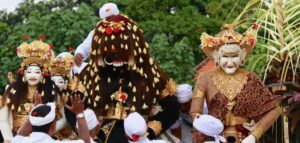
The only exceptions granted are for emergency vehicles responding to life-threatening conditions and women about to give birth.
On the day after Nyepi, known as Ngembak Geni (Relighting the Fire), social activity picks up again quickly, as families and friends gather to ask forgiveness from one another and to perform certain religious rituals together. Fires and electricity are once again permitted and the island once again returns to its normal hectic self,
Melasti is a purification ceremony and ritual, which, is held several days prior to the Nyepi holy day. Melasti was meant as the ritual to cleanse the world from all the filth of sin and bad karma, through the symbolic act of acquiring the “the water of life”.
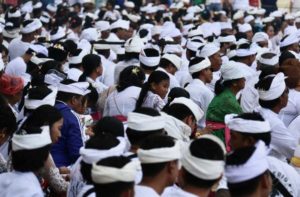
Melasti ceremony is held on the edge of the beach with the aim being to purify oneself of all the bad things in the past and once complete to cast it into the ocean In Hindu belief, the source of water from lakes and the ocean water, are considered the source of life (Tirta Amrita).[ In addition to performing prayers, during Melasti ceremony, all sacred and religious objects which are housed in the temples scattered across Bali will be carried to the beach and purified and blessed by the numerous.

This ceremony is an impressive sight as literally thousands of devotees walk miles in formation towards the water. All are dressed in white attire and their walk is accompanied by numerous Gamelan orchestras. Once they reach their beach destination they will assemble in designated areas according to their village and sit cross-legged on the sand and begin to pray. Silence will descend as the orchestras fall silent creating a wonderful scene of peace and calm.
Oh Bali, I do love you so.
Photographs Copyright Paul v Walters.

About the Author
Paul v Walters is the best selling author of several novels. When he is not cocooned in sloth and procrastination in his house in Bali he also scribbles for several international travel and vox pop journals.